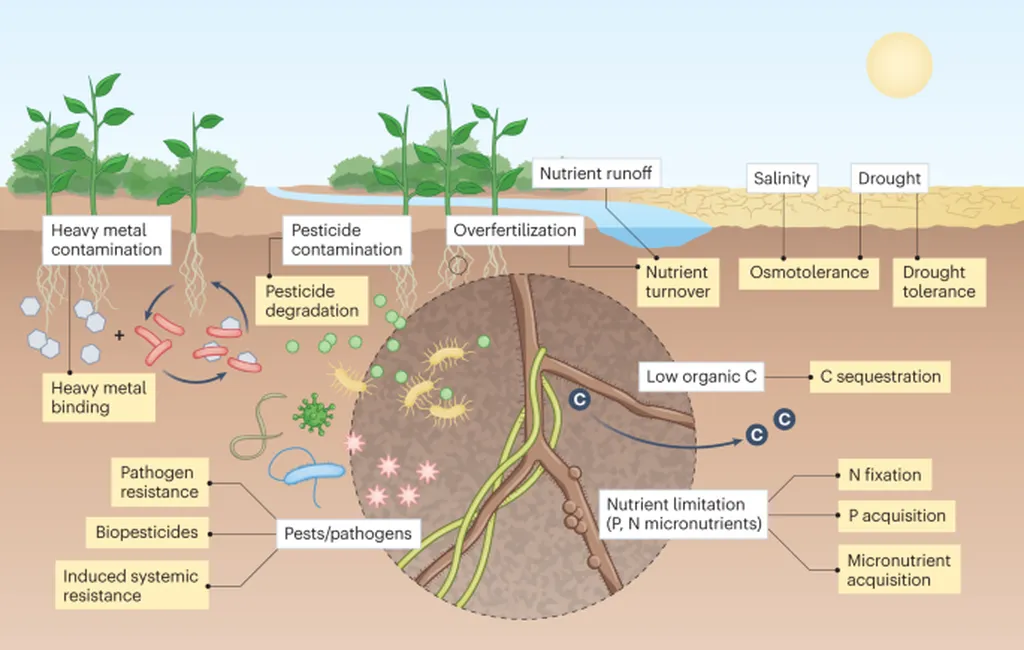In the intricate world of soil bacteria, a new player has emerged, one that could potentially reshape our understanding of microbial interactions and their applications in agriculture. Researchers have identified a novel bacterium, Tundrisphaera macrotermitis sp. nov., isolated from the gut of the fungus-growing termite Macrotermes natalensis in South Africa. This discovery, published in *Scientific Reports*, opens up new avenues for exploring the potential of these microorganisms in enhancing soil health and agricultural productivity.
The bacterium, a member of the family Isosphaeraceae, is characterized by its pink pigmentation, neutrophilic nature, and mesophilic growth conditions. It thrives in temperatures ranging from 18 to 28°C, with an optimal growth temperature of 24°C, and prefers a pH range of 6.0 to 9.0, with an optimum at 7.5. “The unique characteristics of Tundrisphaera macrotermitis make it a fascinating subject for further study,” says Nicolai Kallscheuer, lead author of the study from the Department of Microbial Interactions at the Institute for Microbiology, Friedrich Schiller University.
One of the most intriguing aspects of this discovery is the bacterium’s genome, which is 7.23 Mbp in size with a G+C content of 69.3%. The genome contains four plasmids and exhibits significant differences in carbohydrate-active enzymes, secondary metabolite-associated biosynthetic gene clusters, and plasmid-located genes compared to its closest known relative, Tundrisphaera lichenicola. These differences suggest a unique metabolic potential that could be harnessed for various agricultural applications.
The commercial impacts of this research could be substantial. Soil bacteria play a crucial role in nutrient cycling, plant health, and disease suppression. Understanding the role of Tundrisphaera macrotermitis in these processes could lead to the development of new biofertilizers, biopesticides, and soil amendments that enhance crop productivity and sustainability. “The potential applications of this bacterium in agriculture are vast,” Kallscheuer notes. “By leveraging its unique genetic and metabolic capabilities, we can develop innovative solutions to some of the most pressing challenges in modern agriculture.”
Moreover, the discovery of Tundrisphaera macrotermitis highlights the importance of exploring the microbial diversity of termite guts. These environments are rich in underexplored bacteria that could hold the key to unlocking new agricultural technologies. As researchers delve deeper into the world of soil bacteria, they may uncover even more novel microorganisms with the potential to revolutionize the field.
In conclusion, the identification of Tundrisphaera macrotermitis sp. nov. represents a significant step forward in our understanding of soil bacteria and their role in agriculture. This research not only expands our knowledge of microbial diversity but also paves the way for the development of innovative agricultural technologies that can enhance soil health and crop productivity. As we continue to explore the microbial world, the potential for discovering new and beneficial microorganisms remains vast, offering hope for a more sustainable and productive future in agriculture.

